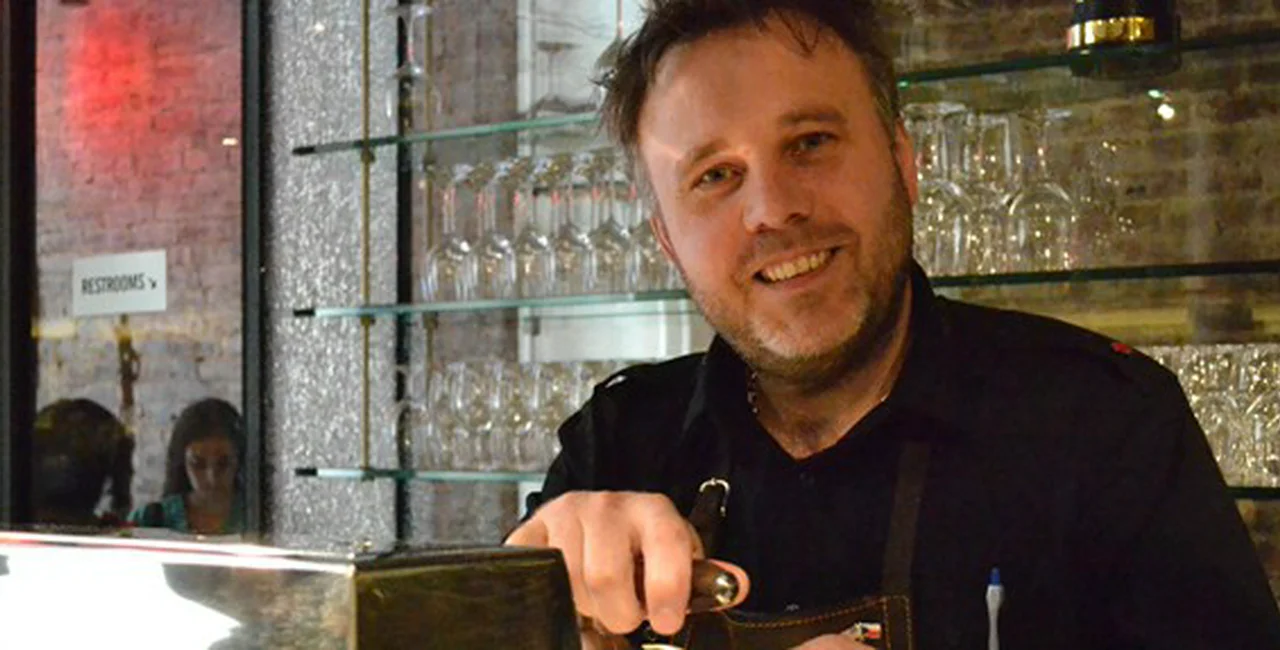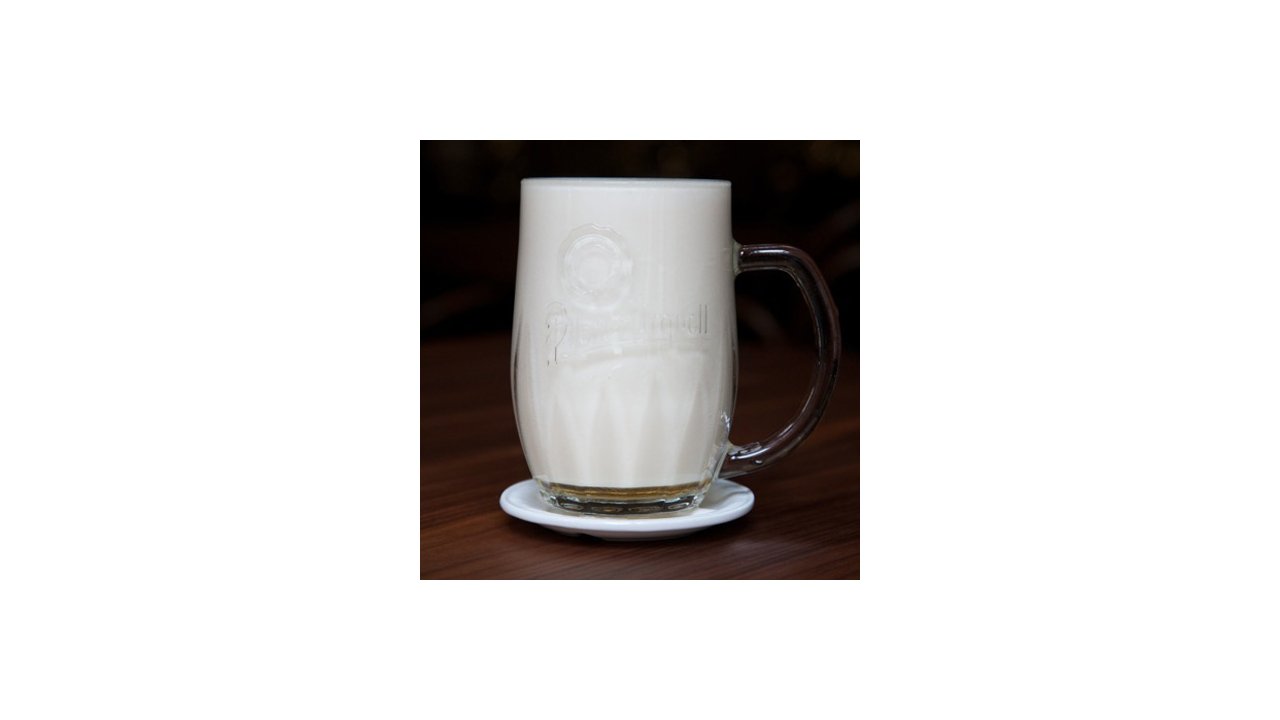Bartender František Šťástka was kind enough to take some time out of his day to answer a few questions, via e-mail, about the beer at Hospoda, Ambiente Group’s New York City location. I hope to make it to Hospoda to try the beer for myself one day.
How long have you been pouring Pilsner Urquell, and where did you learn to pour beer?
I have been pouring beer for about seventeen years now, and have poured several beer brands among which were mostly local beers (Prague breweries) as well as Pilsner Urquell, of course. I poured Pilsner Urquell for the first time at the Pilsner restaurant u Tří Bojovníků , located in the Vyšehrad neighborhood in Prague. At this restaurant I was lucky to work with a great master bartender, Olda, who taught me the basics of pouring the Creame Urquell (hladinka).
PARTNER ARTICLE
Why do you believe pouring beer is an art form?
As the brewmaster Vaclav Berka says, “a brewmaster brews the beer but the draft-master makes the beer.” This means that we all have the same product from the brewery, but a master bartender makes all the difference in the quality and condition the beer is served to a guest. Therefore, all of my duties as a master bartender relate to this process.
What is the most important part of your process?
Guest satisfaction with consistent-quality beer. A satisfied guest that returns for the beer that I take care of.
Where in Prague do you like to drink Pilsner Urquell?
I’m not going to count Lokál restaurant, which belong to the Ambiente Group. I always like to go for a beer where I have friends, and I can rely on the quality of the product and service. I like to go to places with tradition; among my favorites are definitely U Pinkasů, and of course the traditional pub U zlatého tygra. I like to also stop at newly opened restaurants to see how they are doing, because there is always room for improvement.
How is NYC Hospoda being received? Specifically the beer?
Pubs guests are pleasantly surprised at how well the Pilsner Urquell tastes. For example, the foam has flavor, is velvety, creamy, and drinkable. In recent years, the U.S. draft beer Pilsner Urquell adopted American-style tapping. From the tap, it was poured without foam into glasses which were washed in a dishwasher that leaves a chemical smell and thereby affect the taste of beer. So, the response to Pilsner Urquell beer in NYC Hospoda is very positive: we were able to very quickly get a great reputation. New Yorkers appreciate the diversity of the approach, particularly in the care of beer with an emphasis on freshness. Our guests love our Pilsner Urquell, and of course, we are very pleased about that!
What kind of clients are you getting in the restaurant? Czech people, New Yorkers, tourists, celebrities?
Because the pub is not in the tourist center, mainly New Yorkers from the Upper East Side visit us. Among our large group of clients there is also a Czech-Slovak community living in NYC. They have always known where to go for the best “Pilsen” in New York. As for celebrities, our loyal guest Miloš Forman often comes in for a great beer at the pub. Also, Marian Gaborik, the elite hockey player for the New York Rangers, regularly enjoys a beer at NYC Hospoda.
How is beer with so much foam/head being received in America?
Every guest who comes to us gets to taste pivní pěna (beer foam), which is one of the four ways we tap Pilsner Urquell. This style is called mlíko (milk) or sweet: the foam is wet, velvety, and very drinkable with a sweet flavor. After guests have the opportunity to taste the beer foam, they realize how much they like it and come back for more.
What challenges have you faced educating people about foam and different ways of tapping a beer?
Each guest has a different interpretation and takes into account our recommendations. If mliko is consumed too quickly, without enough time for the foam to fall, then it does not have the right taste.
How do you explain the difference in taste and feel between hladinka, šnyt, mlíko, and čochtan?
The taste of beer is influenced by different styles of tapping. With each style, we regulate the content of the Co2 differently. For example, mlíko contains 50% Co2. On the other hand, čochtan contains 100% Co2. This is why mlíko is smooth and sweet, and čochtan is bitter and crisp.
Which type of pour is your best seller? Which is your personal favorite?
The most popular is hladinka: it is the traditional pour in the Czech Republic. I prefer the šnyt, which I think is a beautiful balance of sweetness and bitterness. Also, it is more drinkable due to less Co2 content.
What reactions do you see from the people who are experiencing these unusual beers for the first time?
Surprised and amazed how great beer tastes with us!
Have there been any surprises or situations that you didn’t expect? Negative and/or Positive?
I was nicely surprised that even though Americans don’t usually drink beer with a head, they like our classic draft beer that comes that way.
How is the beer shipped? How long does it take to get to your customers from the Pilsner Urquell brewery? Is the beer kept at a constant temperature the entire journey?
The beer is kept cool all the way to the U.S. The journey to our temperature-controlled warehouse in Brooklyn takes around three weeks. The beer is then transported to our restaurant, where it sits for two days to settle and stabilize.
How is the beer stored? What method do you use to get the beer from the keg to the tap?
In storage, the beer is kept at 10ºC. One day before the beer is served, it is moved to the glass display under the tap, where the temperature is 7ºC. The beer runs through cooled lines and into chilled glasses. Our goal is to not shock the beer with large temperature changes through the whole process.
How often do you clean the lines, and how is it done?
The recommended cleaning schedule is once every two weeks. In the Czech Republic, they use combined chemical-mechanical method where a small stream of water and little sponges push the special agent through the lines. This is the ideal way to go. Here in the U.S., we use a chemical method where we alternate different types of chemicals at each cleaning.
What are the major factors in keeping the beer fresh and served in the best way possible? How important is the glassware that you serve your beer in?
Proper storage at the supplier. That’s why I visited the warehouse that supplies our beer. I wanted to see how they take care of the beer, and what the possibilities are of getting fresh beer delivered. The amount of beer ordered is also important: we want to turn it over quickly and not let it sit for months in storage.
Beer glasses are very important for me. My opinion is that they should be thick glass, because it holds the temperature, is easier to wash, and overall handling is much easier because the glass is not so fragile.
What kind of hygiene standards are upheld in the US. Are those standards more strict in the Czech Republic or in the USA?
Hygienic standards are very similar. We place great emphasis on the cleanliness of the glass. We use a cleaning product that is intended only for the beer glass.
Do any of the laws in the United States effect the way that you would like to serve your beer?
No. This is exactly the way I would have served it in the Czech Republic as well. Our system here is the same as in our restaurants of Ambiente group. And US laws? Yes, there is one difference. I can never pour beer to person younger than 21.
Who is responsible for the hygiene standards, and how often are those standards inspected?
The responsibility for compliance with hygiene standards falls to the manager and the chef. The Dept. of Health inspector who monitors compliance comes unannounced, usually once every half a year. After checking the restaurant he gives us a grade, a sort of report card. We are obligated to post this report card in a visible place at the entrance for all visitors to see how we are doing.
What are people saying about the beer at NYC Hospoda?
They praise the quality and condition of our beer, and they like to come back!
Ambiente’s Hospoda has been met with near-universal praise since opening in 2011 at the Bohemian National Hall in New York’s Upper East Side. More information can be found at their website.
Related articles












 Reading time: 7 minutes
Reading time: 7 minutes 






































